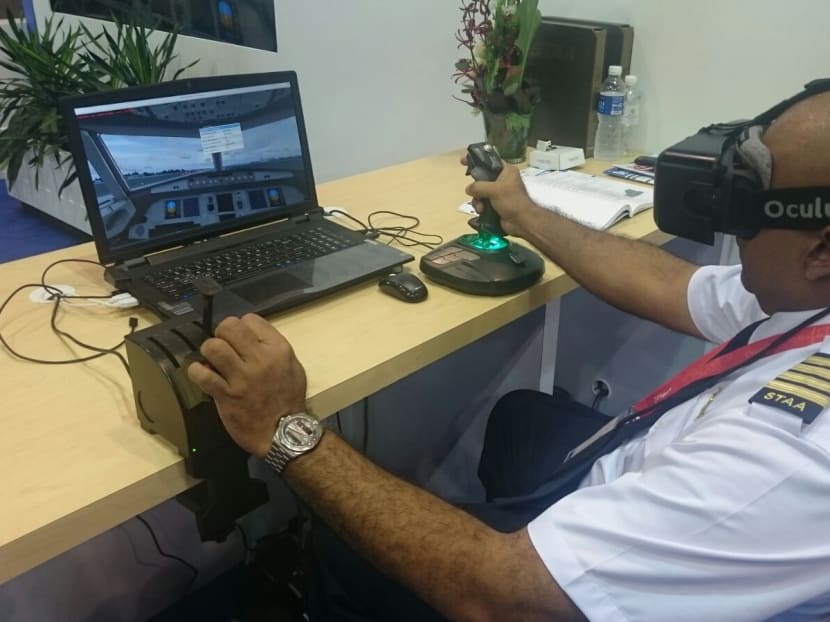Virtual reality headsets to help trainee pilots take to the skies
SINGAPORE — Commercial pilots here may soon be able to undergo part of their training remotely when virtual reality headsets that ST Aerospace is developing come to fruition.

A pilot trainee demonstrating a virtual reality headset developed by ST Aerospace. Photo: Kelly Ng/TODAY
SINGAPORE — Commercial pilots here may soon be able to undergo part of their training remotely when virtual reality headsets that ST Aerospace is developing come to fruition.
These headsets are meant to complement simulator training currently adopted at ST Aerospace’s flight schools, and will also give instructors greater flexibility in varying scenarios and challenges for their trainees.
ST Aerospace, the aviation subsidiary of local defence and engineering conglomerate ST Engineering, owns a flying school based in Australia and also has a simulator training centre in Singapore.
Once users put on the goggle-shaped headsets, they will find themselves “sitting” in a cockpit, with a full suite of aviation controls above, in front of, and below their line of sight.
After performing the necessary pre-flight checks, they can then take to the “skies” using the virtual cockpit control and actual instruments such as a side-stick, two rudder pedals, and a throttle.
This technology — which is showcased for the first time at the Singapore Airshow which opened today (Feb 16) — will make flight training more accessible to prospective pilots, ST Aerospace Academy President Kevin Khoo told TODAY.
“We can potentially link trainee pilots, co-pilots and instructors who are located in geographically different places and countries. Even assessments can be done remotely,” he said.
More students can also be trained simultaneously, as these headsets do not have the same space and cost constraints as simulators do.
“All you need is a laptop and high-speed Internet,” Mr Khoo said.
Each virtual reality training set will cost about US$100,000 (S$140,000), said Mr Khoo, as compared to US$12 million for each full flight simulator.
To enhance the reality of the training experience, developers are also thinking of designing seats that can move in response to environmental factors, such as wind speed.
Unlike a simulator which typically models after a single aircraft, the headsets can be programmed to depict cockpit consoles and flight situations for various planes types.
“There is also greater flexibility for instructors to assess students with a wider range of decision-making situations. There is a lot more dynamism,” said Mr Khoo.
These include introducing more emergency scenarios to test trainees’ response.
ST Aerospace plans to reach out to the authorities here soon to authorise this technology, said Mr Khoo.
“We hope to introduce it for training in three to five years,” he added.






